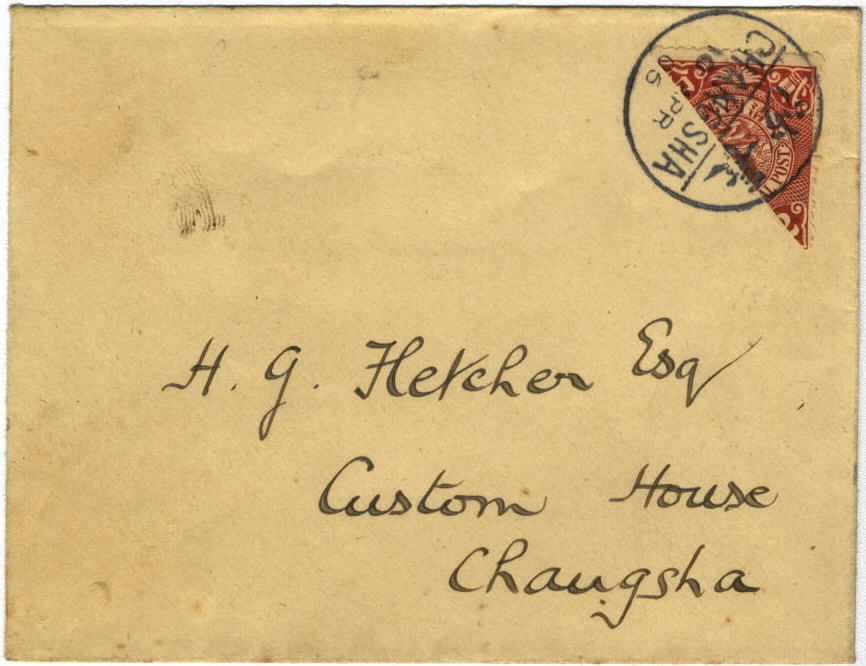|
|
|
|
|
A stamp cut into two parts, each part paying postage to the amount of half the face value of the complete stamp. This practice has been authorized to overcome a temporary shortage of certain denominations. The most famous bisect is the Foochow Bisect, popularly called 颶風票 - hurricane stamp or 颱風票 - typhoon stamp by collectors.
On October 22, 1903, because of the shortage of 1 cent stamps, the postmaster of Foochow ordered that the 2 cents red coiling dragon stamps to be bisected diagonally into two halves. Each half stamp was used as 1 cent and handstamped with a specially made boxed "Postage 1 Cent Paid" rubber stamp. This bisect was used from 22 to 24, three days only. |


|
In June 1904, the Chungking Post Office found itself short of 1 cent stamps. As a temporary measure, postmaster (C.H. Shields?, several existing covers was sent by or addressed to him) ordered that the 2 cents red coiling dragon stamps to be bisected diagonally into two halves and each half was used as 1 cent stamp. No special handstamp was applied to these bisects other than the local CDS. |

|
In April 1906, the Changsha Post Office found itself short of 1 cent stamps. As a temporary measure, permission was given for bisect by Hunan Postal District. Although later Peking officials refused to sanction the action, letters had been accepted for delivery by I.P.O. from April 10 to 12, 1906. |

|
|
|
|

|